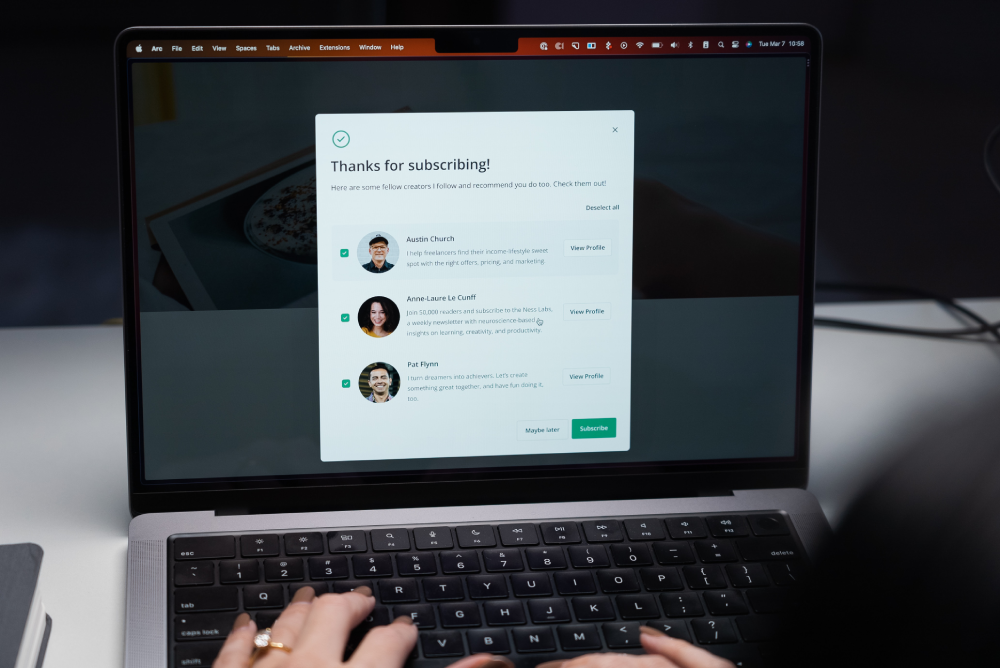Email marketing is a great way to keep in touch with your customers and clients, but what do you do when your subscribers stop engaging with your emails? 👉 This is where a re engagement email comes in.
In this article, we’ll discuss the anatomy of a successful re engagement email and provide you with examples and resources to help you create your own.

A re engagement email is a message sent to subscribers who have stopped engaging with your emails. The purpose of this email is to encourage subscribers to start interacting with your brand again. Re-engagement emails are a great way to reconnect with subscribers, build brand loyalty, and increase engagement.
Under major privacy laws, including Europe’s GDPR and the US’s CAN SPAN Act, it’s a requirement. Plus, it’s useful for feedback and for avoiding being labeled as spam.
🔍 Check out our guide on how to add an unsubscribe link and comply with the law!
When it comes to a re engagement email campaign, there are several types of messages that you can use to encourage subscribers to become active again. These messages can range from a simple reminder of your brand’s value to offering exclusive incentives or personalized recommendations. Let’s see:
💡 Consider that a well-crafted re engagement email can be a powerful tool to win back their attention and re-establish a relationship. Check out how these examples illustrate how to encourage subscribers to take action and engage with your brand once again:
“We Miss You” email from Sephora
Subject line: Come back and get rewarded – it’s worth it!
Dear [Subscriber],
It’s been a while since we’ve seen you around here, and we just wanted to let you know that we miss you! As a loyal subscriber, we wanted to offer you an exclusive deal just for you – a $15 reward on your next purchase of $50 or more.
We’ve been working hard to bring you the latest in beauty trends and products, and we don’t want you to miss out. Come back and see what’s new, and get rewarded for it!
Thank you for your loyalty and support, and we hope to see you soon.
Best, The Sephora Team
This email uses personalization by addressing the subscriber by name, and offers an exclusive reward to entice them to come back and make a purchase. The subject line is attention-grabbing and creates a sense of urgency by highlighting the exclusive reward. And lastly, a clear call-to-action button.
“Exclusive Offer” email from Grammarly
Subject line: Your free month of Grammarly Premium is waiting!
Hi [Subscriber],
We noticed that you haven’t been using Grammarly as much lately, and we wanted to remind you of all the great features that you’re missing out on. As a loyal subscriber, we’re offering you a free month of Grammarly Premium – no strings attached.
With Grammarly Premium, you’ll get access to advanced grammar and spelling checks, a plagiarism checker, and more. Plus, you’ll be able to use Grammarly across all your devices, so you can write with confidence wherever you are.
Don’t miss out on this exclusive offer – just click the button below to redeem your free month of Grammarly Premium!
Best, The Grammarly Team
This another example uses personalization by addressing the subscriber by name, and offers an exclusive reward (a free month of Grammarly Premium) to entice them to come back and use the product. The subject line is attention-grabbing and creates a sense of urgency by highlighting the free month offer.
A re engagement campaign is a series of emails sent to subscribers who have stopped engaging with your emails. This type of campaign is designed to gradually re-engage subscribers and encourage them to start interacting with your brand again.
A typical re-engagement campaign might include:
💡 Re-engagement emails are a great way to reconnect with subscribers who have stopped engaging with your brand. But remember that there are some legal requirements to consider when sending marketing emails, so please don’t overlook them.
Let’s see below how you can easily comply with these requirements ⬇️
We get it, compliance can be complicated. But this is a crucial step in implementing your re engagement email strategy. Some privacy laws like the GDPR most likely apply to you. Before sending emails to people, you need to:
🤔 Not sure how to set this up?
Don’t worry, we’ve got you. Use our all-in-one tool to do all of the above in minutes ⬇️
The solution to draft, update and maintain your Terms and Conditions. Optimised for eCommerce, marketplace, SaaS, apps & more.